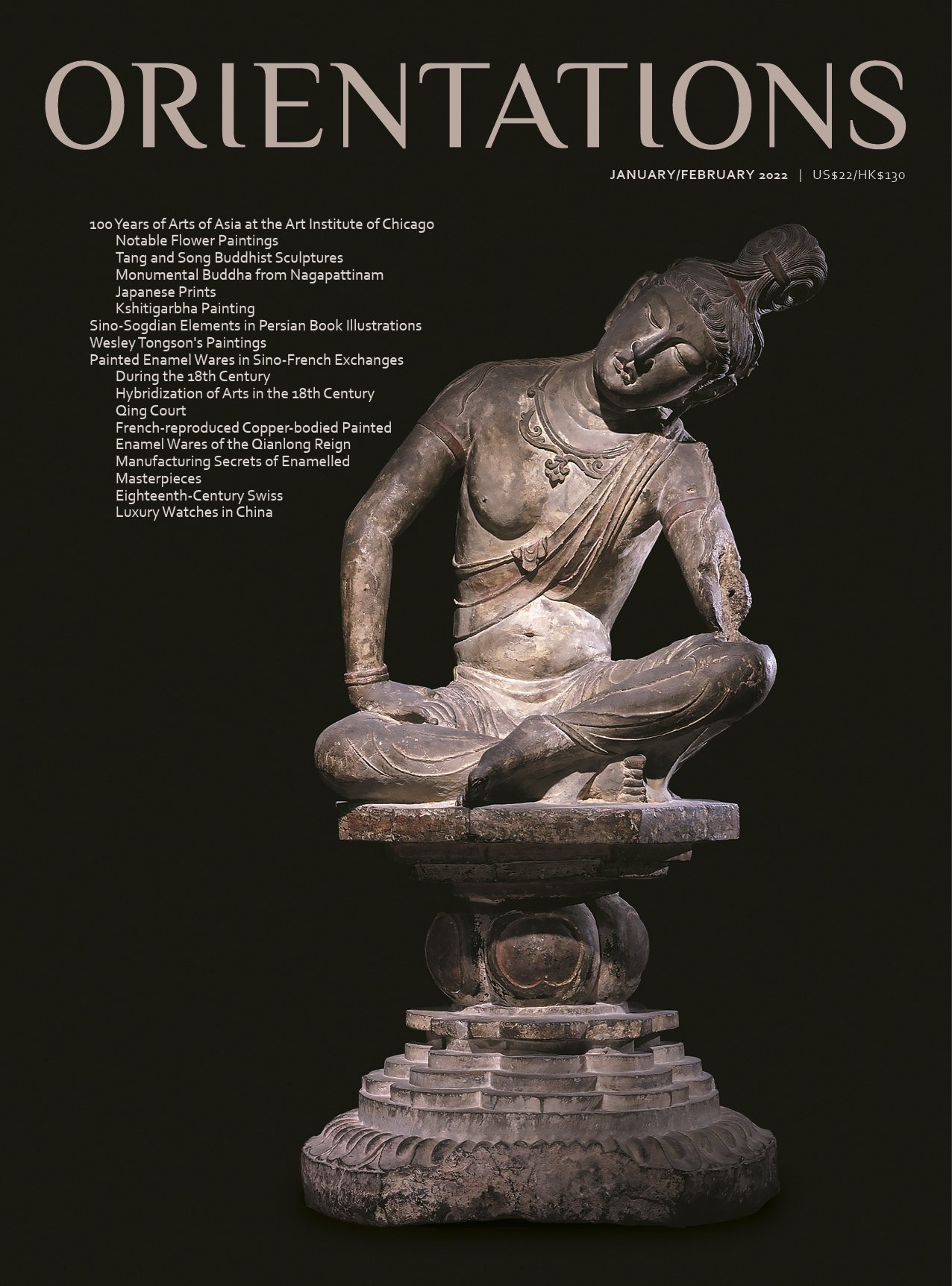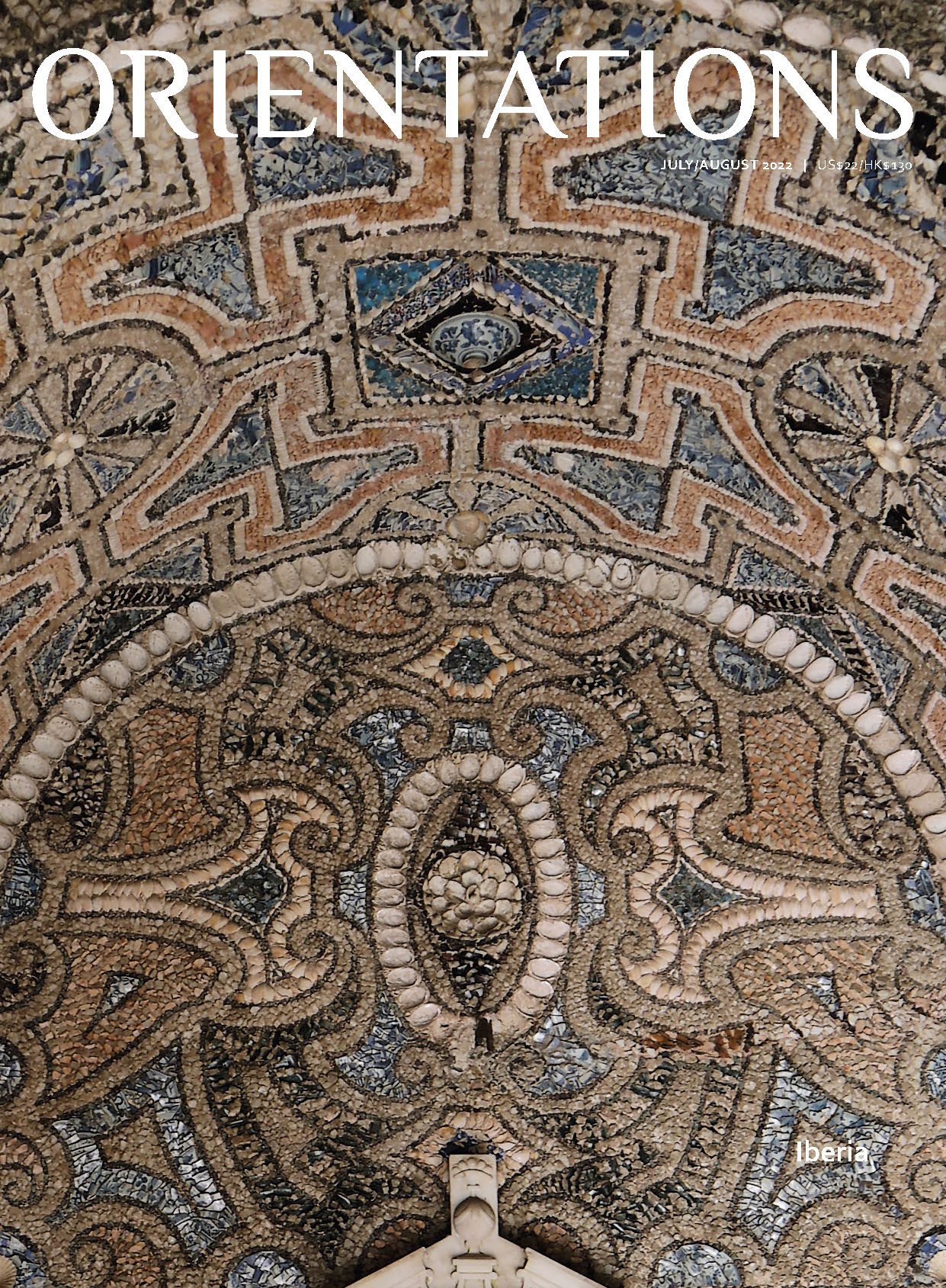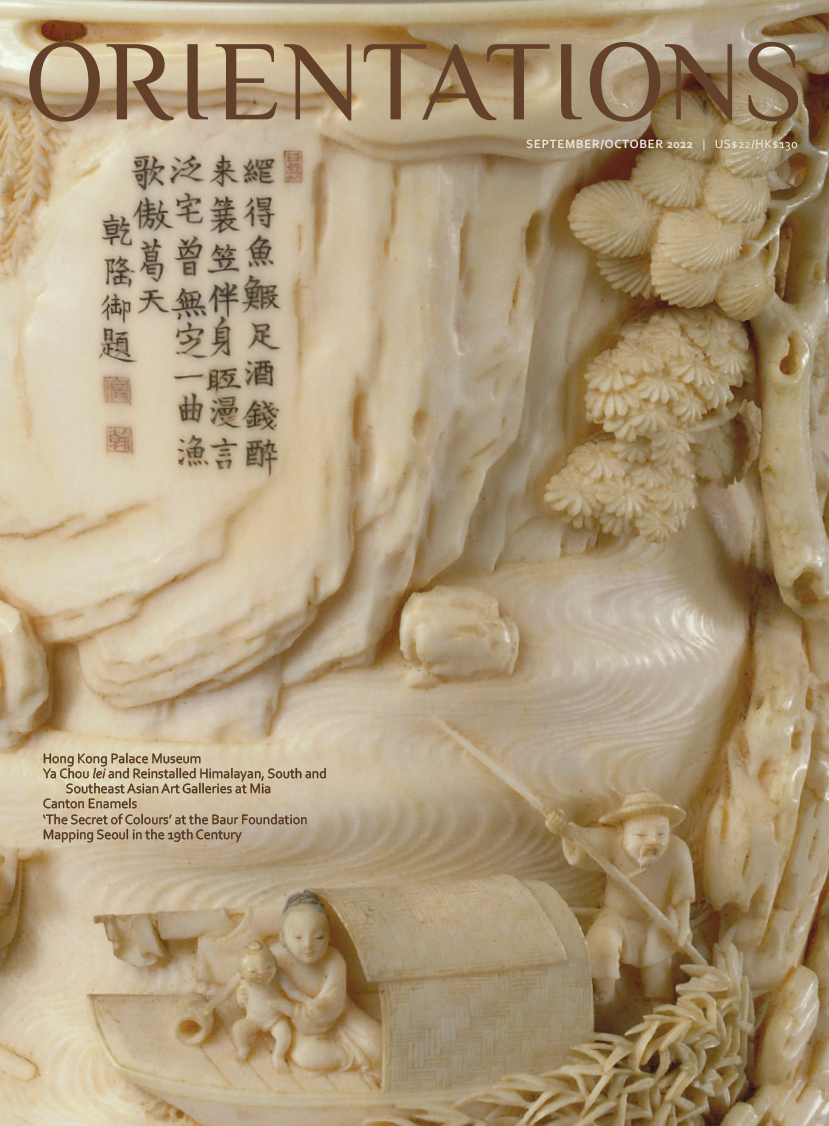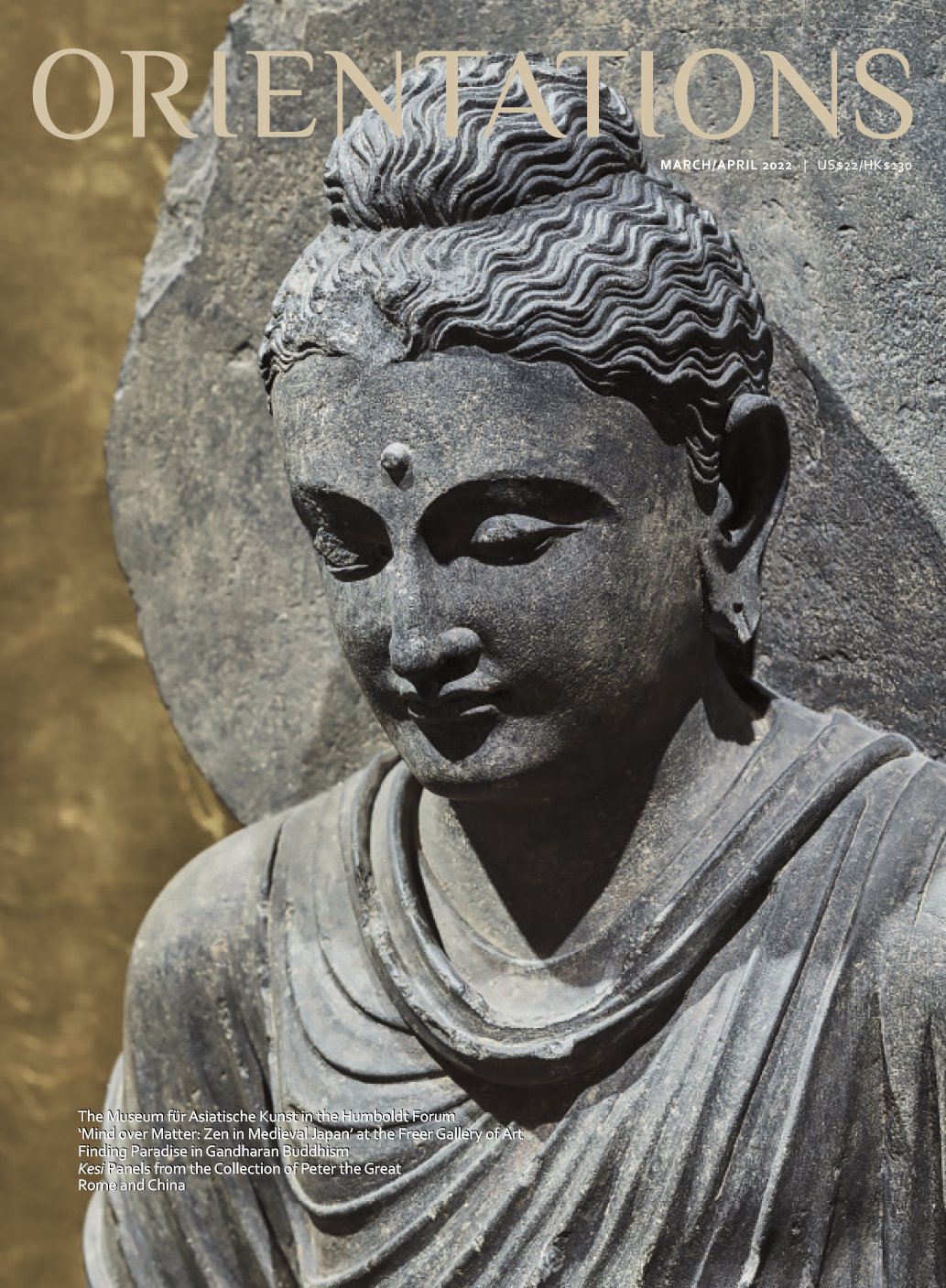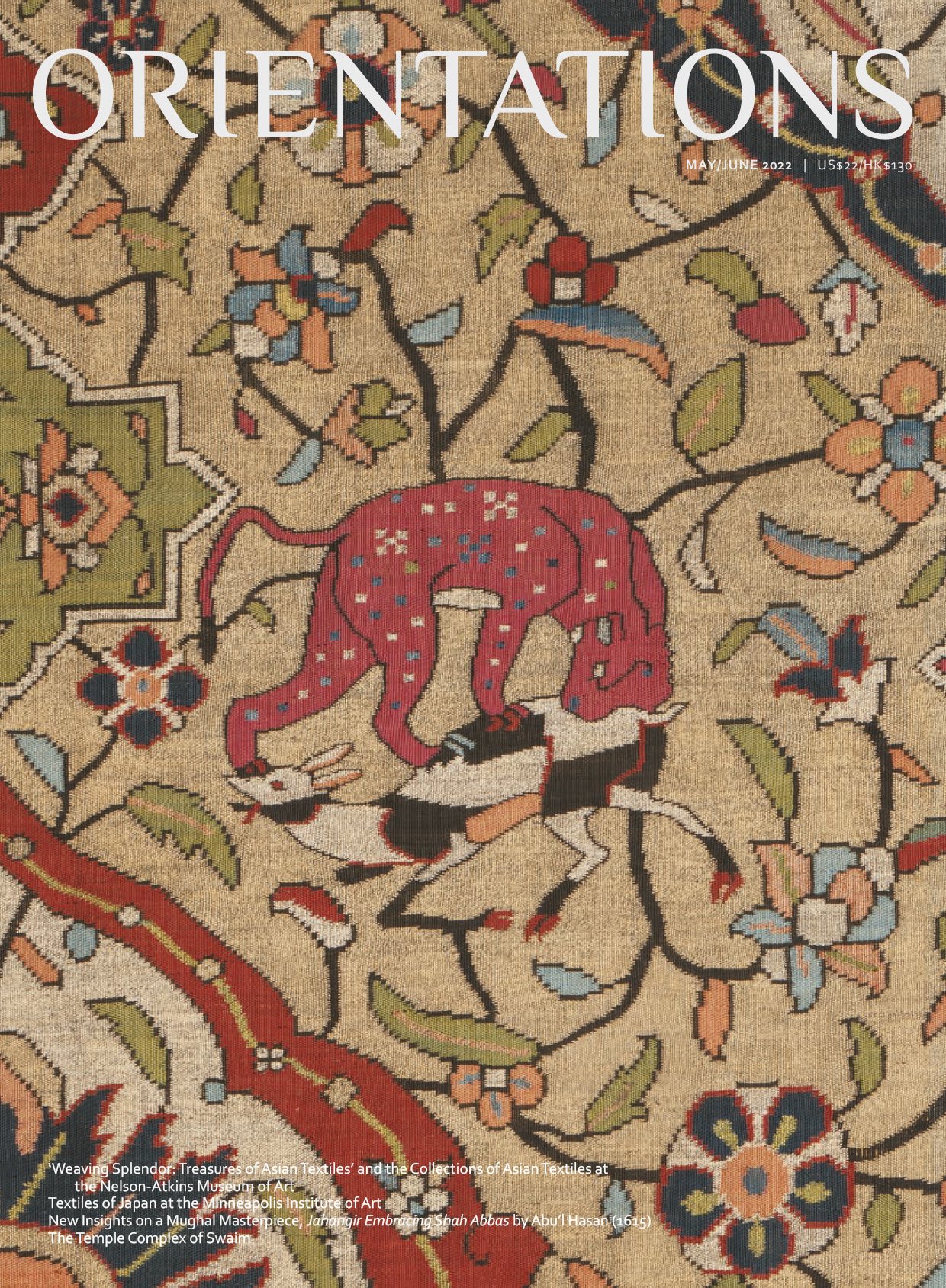NOV/DEC 2022
VOLUME 53 - NUMBER 6
The Shanghai Museum celebrates its 70th anniversary in 2022. Built in the shape of an archaic bronze ding, the museum has become one of the most important institutions of Chinese art in the world, with over one million objects. This issue was originally planned not only to mark the anniversary but also to highlight the opening of a second branch of the museum in the Pudong district. However, construction has been delayed due to the Covid pandemic. Thus, a later issue will spotlight the new branch, and we focus here on the anniversary with three articles on special exhibitions.
The museum last year launched a series of retrospective shows featuring donated objects, which constitute almost 9 per cent of its collection. The third and latest in this series, ‘Treasure of Prosperity: Gifts for the Shanghai Museum’, presents 145 works gifted by fifty individual and family donors from both inside and outside of China. Another of the many strengths in the collection is its early archaeological material. The exhibition ‘The Making of China: The Civilizations of the Xia, Shang, and Zhou Dynasties’ centres on some of the most significant discoveries in Henan province. In the exhibition ‘The Secret Treasures of Shanghai Museum: The Special Exhibition of the Kesi Lotus Pond and Ducks’, one of the treasures on display is a Southern Song kesi tapestry embroidered with ducks in a lotus pond by Zhu Kerou (act. 1127–62), a female master weaver from the area of present-day Shanghai. Since its acquisition by the museum in 1952, it has been preserved in storage except when it travelled to Japan in 1993 for a short exhibition. Its sophisticated design is reminiscent of the style developed by the Imperial Painting Academy and has evoked extensive discussions around the weaving technique, the art historical context, and the life of the mysterious artist.
This year also marks the 60th anniversary of the Hong Kong Museum of Art, which reopened in 2019 after several years of refurbishment. In the exhibition ‘In-Between’, a small selection of works that embody key moments in the history of the museum is presented.
In the early 20th century, the Metropolitan Museum of Art and the Philadelphia Museum of Art each acquired a hanging scroll painting of misty mountain scenes from the dealer V. G. Simkhovitch (1874–1959); the painting in the former is currently dated to the Joseon era (1392–1910), while the one in the latter is labelled as of either Korean or Chinese origin. An article argues that the two paintings were originally a pair meant to be viewed together. Another article examines the development of the imperial mounting style of painting and calligraphy under the Qianlong emperor (r. 1736–95), an enthusiastic art patron who was actively involved in every step during the production of imperial works.
Earlier this year, the National Gallery of Prague opened ‘Zenga–Japanese Zen Paintings from the Kaeru-An Collection’, an exhibition of a newly donated collection of Japanese Zen art from Dutch collector and artist Felix Hess (b. 1941). An article presents highlights and shares the artistic, philosophical, and practical dimensions of Zen art.
FEATURES
Chen Jie. ‘The Making of China’: An Exhibition on the Civilizations of the Xia, Shang, and Zhou Dynasties at the Shanghai Museum
Zhang Dong. Treasure of Prosperity: Gifts for the Shanghai Museum
Yu Ying. Auspicious Colour into Light: The Special Exhibition of the Shanghai Museum’s Secret Treasure, the Kesi Lotus Pond and Ducks
Richard M. Barnhart. A Pair of Chinese Paintings Reconnected
Qin Chongtai. The Art of Mounting Calligraphy and Paintings in the Court of Qianlong
Markéta Hánová. Seeing Zen in Prague: A Unique Collection of Japanese Zen Art
Maria Kar-wing Mok. Celebrating the Uncelebrated at the 60th Anniversary of the Hong Kong Museum of Art
Hugh Moss. The Origins of Guyue Xuan Enamelled Glass Wares: A Documentary Group of Qing Imperial Enamels Produced in the Inner Palace between 1767 and the 1770s
Rachel Parikh. The Return Home: The Glasgow Museums’ Repatriation of Seven Objects to India
REVIEWS
Ursula Weekes. The Art of Cloth in Mughal India by Sylvia Houghteling
VOLUME 53 - NUMBER 6
The Shanghai Museum celebrates its 70th anniversary in 2022. Built in the shape of an archaic bronze ding, the museum has become one of the most important institutions of Chinese art in the world, with over one million objects. This issue was originally planned not only to mark the anniversary but also to highlight the opening of a second branch of the museum in the Pudong district. However, construction has been delayed due to the Covid pandemic. Thus, a later issue will spotlight the new branch, and we focus here on the anniversary with three articles on special exhibitions.
The museum last year launched a series of retrospective shows featuring donated objects, which constitute almost 9 per cent of its collection. The third and latest in this series, ‘Treasure of Prosperity: Gifts for the Shanghai Museum’, presents 145 works gifted by fifty individual and family donors from both inside and outside of China. Another of the many strengths in the collection is its early archaeological material. The exhibition ‘The Making of China: The Civilizations of the Xia, Shang, and Zhou Dynasties’ centres on some of the most significant discoveries in Henan province. In the exhibition ‘The Secret Treasures of Shanghai Museum: The Special Exhibition of the Kesi Lotus Pond and Ducks’, one of the treasures on display is a Southern Song kesi tapestry embroidered with ducks in a lotus pond by Zhu Kerou (act. 1127–62), a female master weaver from the area of present-day Shanghai. Since its acquisition by the museum in 1952, it has been preserved in storage except when it travelled to Japan in 1993 for a short exhibition. Its sophisticated design is reminiscent of the style developed by the Imperial Painting Academy and has evoked extensive discussions around the weaving technique, the art historical context, and the life of the mysterious artist.
This year also marks the 60th anniversary of the Hong Kong Museum of Art, which reopened in 2019 after several years of refurbishment. In the exhibition ‘In-Between’, a small selection of works that embody key moments in the history of the museum is presented.
In the early 20th century, the Metropolitan Museum of Art and the Philadelphia Museum of Art each acquired a hanging scroll painting of misty mountain scenes from the dealer V. G. Simkhovitch (1874–1959); the painting in the former is currently dated to the Joseon era (1392–1910), while the one in the latter is labelled as of either Korean or Chinese origin. An article argues that the two paintings were originally a pair meant to be viewed together. Another article examines the development of the imperial mounting style of painting and calligraphy under the Qianlong emperor (r. 1736–95), an enthusiastic art patron who was actively involved in every step during the production of imperial works.
Earlier this year, the National Gallery of Prague opened ‘Zenga–Japanese Zen Paintings from the Kaeru-An Collection’, an exhibition of a newly donated collection of Japanese Zen art from Dutch collector and artist Felix Hess (b. 1941). An article presents highlights and shares the artistic, philosophical, and practical dimensions of Zen art.
FEATURES
Chen Jie. ‘The Making of China’: An Exhibition on the Civilizations of the Xia, Shang, and Zhou Dynasties at the Shanghai Museum
Zhang Dong. Treasure of Prosperity: Gifts for the Shanghai Museum
Yu Ying. Auspicious Colour into Light: The Special Exhibition of the Shanghai Museum’s Secret Treasure, the Kesi Lotus Pond and Ducks
Richard M. Barnhart. A Pair of Chinese Paintings Reconnected
Qin Chongtai. The Art of Mounting Calligraphy and Paintings in the Court of Qianlong
Markéta Hánová. Seeing Zen in Prague: A Unique Collection of Japanese Zen Art
Maria Kar-wing Mok. Celebrating the Uncelebrated at the 60th Anniversary of the Hong Kong Museum of Art
Hugh Moss. The Origins of Guyue Xuan Enamelled Glass Wares: A Documentary Group of Qing Imperial Enamels Produced in the Inner Palace between 1767 and the 1770s
Rachel Parikh. The Return Home: The Glasgow Museums’ Repatriation of Seven Objects to India
REVIEWS
Ursula Weekes. The Art of Cloth in Mughal India by Sylvia Houghteling
VOLUME 53 - NUMBER 6
The Shanghai Museum celebrates its 70th anniversary in 2022. Built in the shape of an archaic bronze ding, the museum has become one of the most important institutions of Chinese art in the world, with over one million objects. This issue was originally planned not only to mark the anniversary but also to highlight the opening of a second branch of the museum in the Pudong district. However, construction has been delayed due to the Covid pandemic. Thus, a later issue will spotlight the new branch, and we focus here on the anniversary with three articles on special exhibitions.
The museum last year launched a series of retrospective shows featuring donated objects, which constitute almost 9 per cent of its collection. The third and latest in this series, ‘Treasure of Prosperity: Gifts for the Shanghai Museum’, presents 145 works gifted by fifty individual and family donors from both inside and outside of China. Another of the many strengths in the collection is its early archaeological material. The exhibition ‘The Making of China: The Civilizations of the Xia, Shang, and Zhou Dynasties’ centres on some of the most significant discoveries in Henan province. In the exhibition ‘The Secret Treasures of Shanghai Museum: The Special Exhibition of the Kesi Lotus Pond and Ducks’, one of the treasures on display is a Southern Song kesi tapestry embroidered with ducks in a lotus pond by Zhu Kerou (act. 1127–62), a female master weaver from the area of present-day Shanghai. Since its acquisition by the museum in 1952, it has been preserved in storage except when it travelled to Japan in 1993 for a short exhibition. Its sophisticated design is reminiscent of the style developed by the Imperial Painting Academy and has evoked extensive discussions around the weaving technique, the art historical context, and the life of the mysterious artist.
This year also marks the 60th anniversary of the Hong Kong Museum of Art, which reopened in 2019 after several years of refurbishment. In the exhibition ‘In-Between’, a small selection of works that embody key moments in the history of the museum is presented.
In the early 20th century, the Metropolitan Museum of Art and the Philadelphia Museum of Art each acquired a hanging scroll painting of misty mountain scenes from the dealer V. G. Simkhovitch (1874–1959); the painting in the former is currently dated to the Joseon era (1392–1910), while the one in the latter is labelled as of either Korean or Chinese origin. An article argues that the two paintings were originally a pair meant to be viewed together. Another article examines the development of the imperial mounting style of painting and calligraphy under the Qianlong emperor (r. 1736–95), an enthusiastic art patron who was actively involved in every step during the production of imperial works.
Earlier this year, the National Gallery of Prague opened ‘Zenga–Japanese Zen Paintings from the Kaeru-An Collection’, an exhibition of a newly donated collection of Japanese Zen art from Dutch collector and artist Felix Hess (b. 1941). An article presents highlights and shares the artistic, philosophical, and practical dimensions of Zen art.
FEATURES
Chen Jie. ‘The Making of China’: An Exhibition on the Civilizations of the Xia, Shang, and Zhou Dynasties at the Shanghai Museum
Zhang Dong. Treasure of Prosperity: Gifts for the Shanghai Museum
Yu Ying. Auspicious Colour into Light: The Special Exhibition of the Shanghai Museum’s Secret Treasure, the Kesi Lotus Pond and Ducks
Richard M. Barnhart. A Pair of Chinese Paintings Reconnected
Qin Chongtai. The Art of Mounting Calligraphy and Paintings in the Court of Qianlong
Markéta Hánová. Seeing Zen in Prague: A Unique Collection of Japanese Zen Art
Maria Kar-wing Mok. Celebrating the Uncelebrated at the 60th Anniversary of the Hong Kong Museum of Art
Hugh Moss. The Origins of Guyue Xuan Enamelled Glass Wares: A Documentary Group of Qing Imperial Enamels Produced in the Inner Palace between 1767 and the 1770s
Rachel Parikh. The Return Home: The Glasgow Museums’ Repatriation of Seven Objects to India
REVIEWS
Ursula Weekes. The Art of Cloth in Mughal India by Sylvia Houghteling


